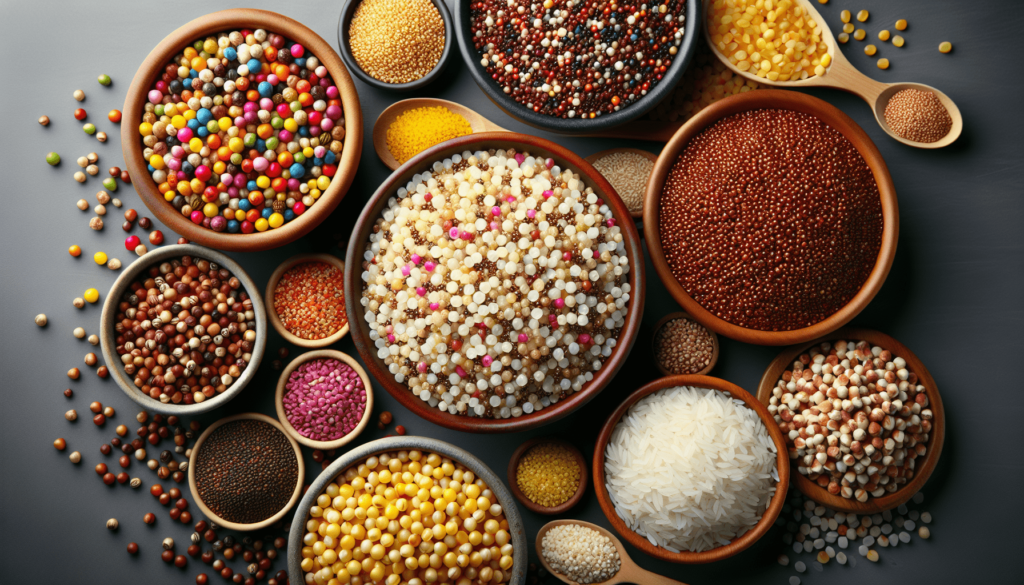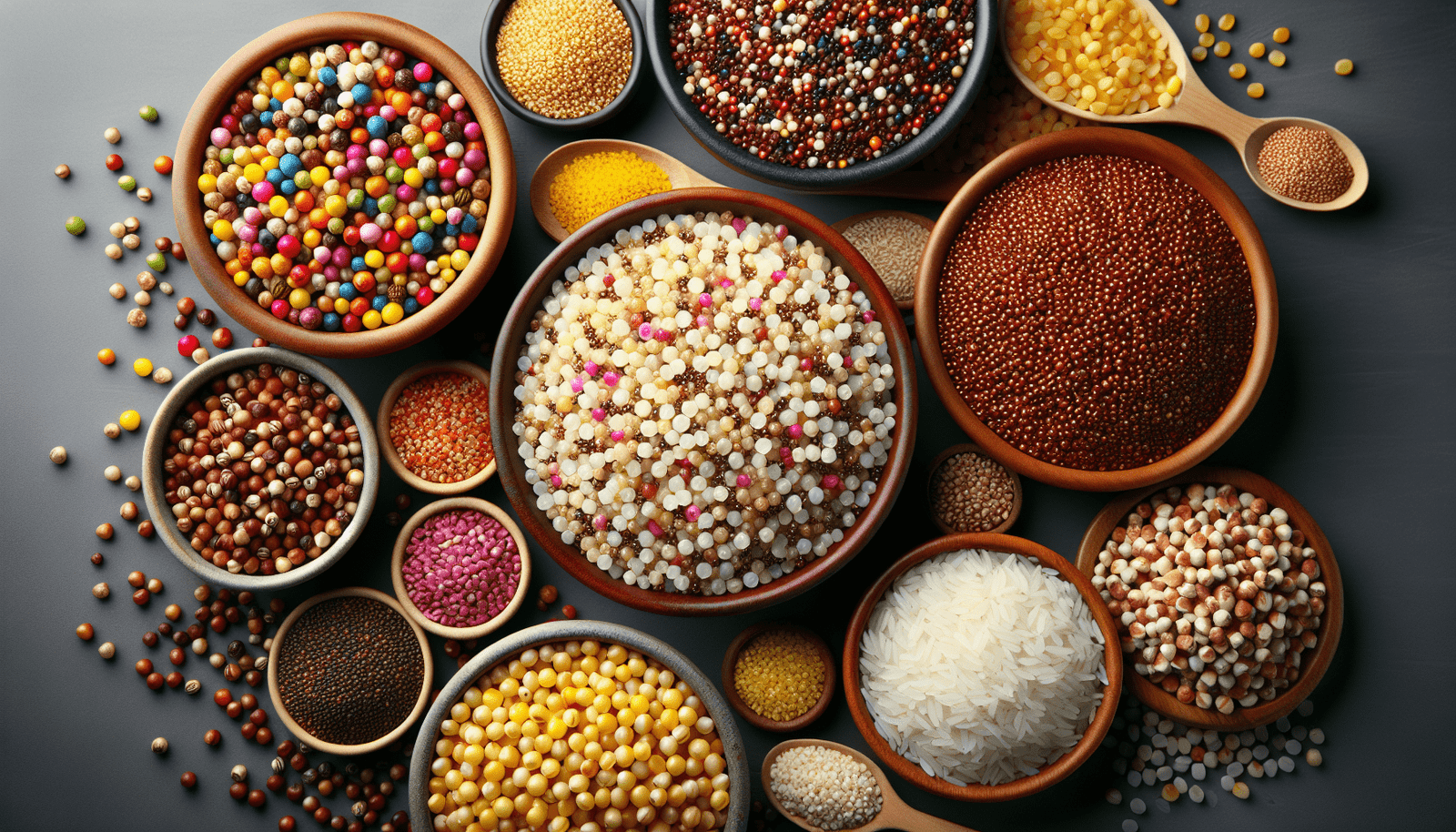Going Gluten-Free: A Comprehensive Guide
Have you been considering going gluten-free but find it overwhelming or confusing? Don’t worry, you’re not alone. Making the switch to a gluten-free lifestyle can be a big adjustment, but with the right information and guidance, you can navigate this journey with ease. In this guide, we’ll walk you through everything you need to know about going gluten-free, from understanding what gluten is to practical tips for maintaining a gluten-free diet.

Understanding Gluten
Let’s start with the basics: what exactly is gluten? Gluten is a protein found in grains like wheat, barley, and rye. It’s the component that gives dough its elasticity and helps baked goods hold their shape. For some people, gluten can cause negative reactions in the body, leading to symptoms like bloating, diarrhea, and fatigue.
Common Sources of Gluten
Gluten can be found in a wide range of foods, so it’s essential to familiarize yourself with common sources to avoid accidental consumption. Some sources of gluten include:
- Bread and baked goods
- Pasta
- Cereal
- Beer
- Salad dressings
- Soups
By being aware of these sources, you can make more informed choices when planning your gluten-free meals.
Reasons for Going Gluten-Free
There are several reasons why someone might choose to go gluten-free. The most common reasons include:
- Celiac disease: An autoimmune disorder in which the ingestion of gluten leads to damage in the small intestine.
- Non-celiac gluten sensitivity: Individuals experience symptoms similar to those with celiac disease but do not test positive for the condition.
- Wheat allergy: A specific allergy to wheat that can result in a range of symptoms, from hives to breathing difficulties.
If you suspect you have any of these conditions, it’s essential to consult with a healthcare provider for a proper diagnosis before making any dietary changes.

How to Transition to a Gluten-Free Diet
Transitioning to a gluten-free diet may seem daunting at first, but with the right approach, you can make the switch smoothly. Here are some practical tips to help you get started:
Clean out your pantry
Go through your pantry and remove any foods that contain gluten. This will help you avoid temptation and make room for gluten-free alternatives. Consider donating unopened items to a local food bank or pantry.
Familiarize yourself with gluten-free alternatives
There are plenty of gluten-free alternatives available for common foods like bread, pasta, and snacks. Experiment with different brands and products to find ones that you enjoy.
Plan your meals in advance
Meal planning can help you stay on track and prevent last-minute decisions that may lead to accidental gluten consumption. Look for gluten-free recipes online or invest in a cookbook dedicated to gluten-free cooking.
Be mindful of cross-contamination
Even if a dish is gluten-free, it can still become contaminated if prepared in a kitchen that isn’t gluten-free. Use separate utensils, cutting boards, and cookware to avoid cross-contamination.
Reading Labels
One of the most critical skills you’ll need on a gluten-free diet is the ability to read food labels effectively. Many packaged foods contain hidden sources of gluten, so it’s essential to scrutinize labels for any potential gluten-containing ingredients. Here are some key terms to look out for:
Ingredients to Avoid
- Wheat
- Barley
- Rye
- Malt
- Brewer’s yeast
- Farro
Be on the lookout for these ingredients when shopping for groceries to ensure you’re not inadvertently consuming gluten.
Gluten-Free Certification
Some products carry a gluten-free certification label, indicating that they have been tested and verified to contain less than 20 parts per million of gluten. While this certification is not required, it can provide added assurance for those on a gluten-free diet.
“May Contain” Statements
Manufacturers are required to disclose if a product may contain traces of gluten due to cross-contamination during production. While these statements are voluntary, they can help you make more informed decisions when selecting products.
Dining Out
Eating out can be challenging when following a gluten-free diet, as many restaurants may not have dedicated gluten-free menus or take precautions to prevent cross-contamination. Here are some tips for dining out safely:
Research restaurants in advance
Before heading to a restaurant, research their menu online or call ahead to inquire about gluten-free options. Look for establishments that offer gluten-free alternatives or are knowledgeable about accommodating dietary restrictions.
Communicate your needs
When ordering at a restaurant, don’t hesitate to inform your server about your gluten-free requirements. Ask questions about how dishes are prepared and whether any substitutions can be made to accommodate your needs.
Avoid shared fryers
Fried foods are a common source of cross-contamination, as items containing gluten are often cooked in the same fryer as gluten-free items. To be safe, opt for grilled, baked, or sautéed dishes instead.
Common Pitfalls to Avoid
While transitioning to a gluten-free diet, there are common pitfalls you’ll want to steer clear of to ensure your success. Here are some mistakes to avoid:
Assuming all gluten-free products are healthy
Just because a product is labeled gluten-free doesn’t mean it’s necessarily healthy. Many gluten-free alternatives can be high in sugar, sodium, or unhealthy fats, so be sure to check nutrition labels and ingredients lists.
Neglecting nutrient intake
Eliminating gluten from your diet can lead to nutrient deficiencies if you’re not mindful of your intake. Focus on incorporating a variety of fruits, vegetables, lean proteins, and whole grains to ensure you’re getting essential vitamins and minerals.
Forgetting to check condiments and sauces
Condiments and sauces can be sneaky sources of gluten, as many contain gluten-containing ingredients like soy sauce or malt vinegar. Always check labels or inquire with manufacturers to ensure these items are gluten-free.
Resources for Going Gluten-Free
When embarking on your gluten-free journey, it can be helpful to have resources and support to guide you along the way. Here are some useful tools for those going gluten-free:
Gluten-Free Apps
There are several apps available that can help you navigate a gluten-free diet, from finding safe restaurants to scanning barcodes for gluten-free products. Some popular options include Find Me Gluten Free and Gluten Free Scanner.
Gluten-Free Blogs and Websites
Many bloggers and websites specialize in gluten-free living, offering recipes, product recommendations, and tips for eating out. Explore sites like Gluten-Free Living and Gluten-Free Goddess for inspiration and guidance.
Support Groups
Joining a support group or online community for individuals following a gluten-free diet can provide invaluable support and advice. Connect with others who understand your journey and can offer tips for managing challenges.
Conclusion
Transitioning to a gluten-free diet can be a positive step towards improved health and well-being for many individuals. By understanding what gluten is, why you may choose to go gluten-free, and how to navigate a gluten-free lifestyle effectively, you can make the switch with confidence. Remember that everyone’s journey is unique, so be patient with yourself as you adapt to this new way of eating. With the right information and resources, you can thrive on a gluten-free diet and enjoy the benefits it brings to your overall health.

